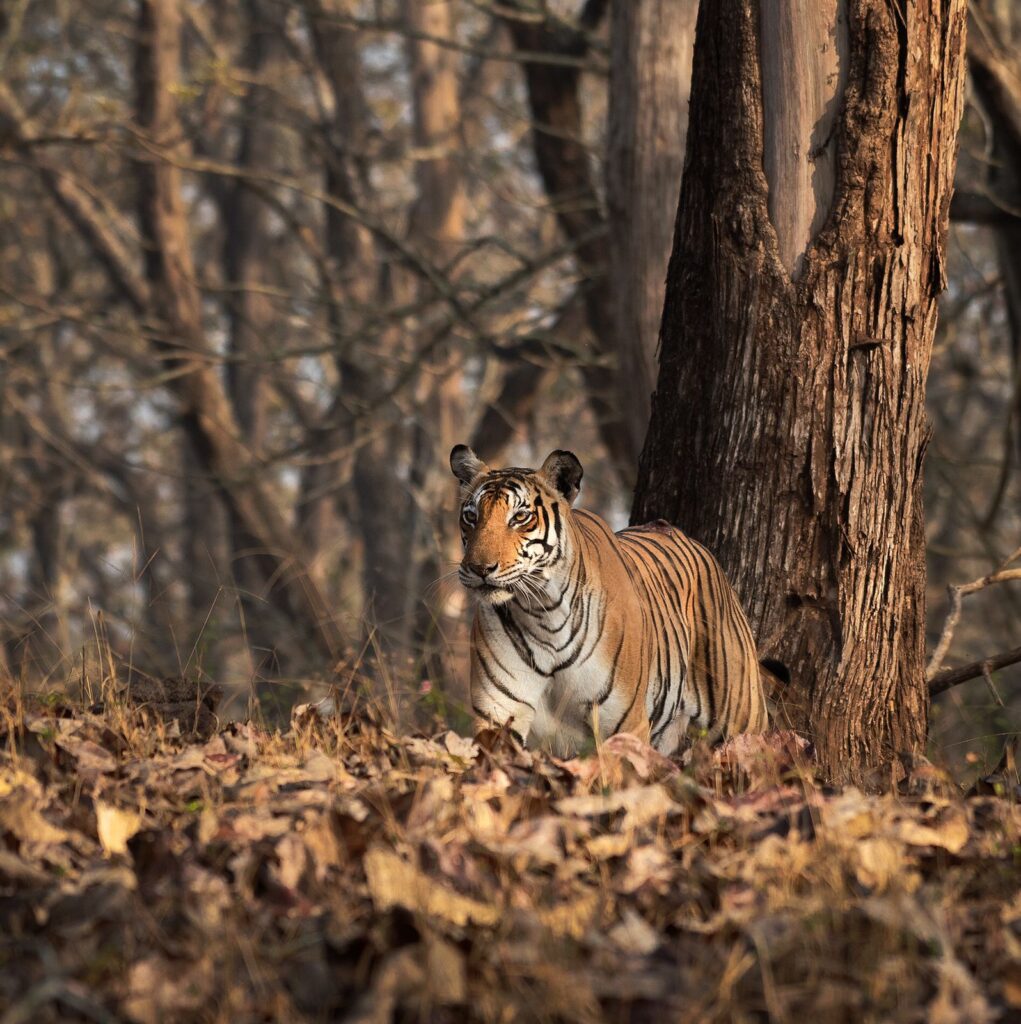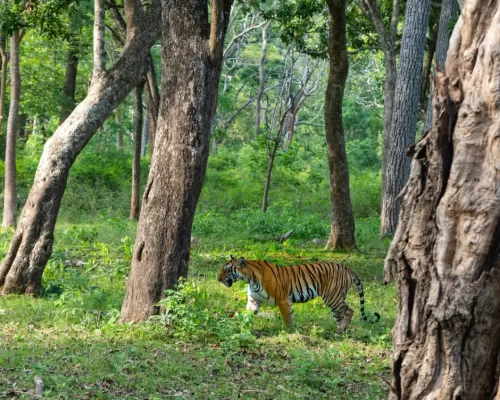In the Indian state of Karnataka’s Kodagu and Mysore, district sits the national park known as Nagarahole. It is also known as Rajiv Gandhi National Park which is an unspoiled environment with calm forests, gushing streams, and lakes and reservoirs. The park receives its name from the snake-like Kabini River, the greatest of the park’s streams that separates it from Bandipur National Park to the south. Both parks are divided by the Kabini reservoir. A travel guide will help you make the best of your trip to the Nagarahole Tiger reserve.
The park has elevations between 687 and 960 meters. It is 50 kilometers from Mysore and 220 kilometers from Bengaluru, the state capital of Karnataka. This region of India receives torrential monsoon rains, which provide an abundance of water supplies for the park’s extensive wildlife, which includes over 250 species of birds, elephants, sloth bears, bison, tigers, leopards, deer, and wild boar.
This park was previously a private hunting preserve for former Mysore monarchs in Karnataka. Today, however, the tiger population and other predators in the park are thriving. Flora The major vegetation in Nagarhole National Park is of the southern tropical, moist, mixed deciduous type, with a significant eastern section intergrading into dry deciduous type. Experience the beautiful wildlife of Nagarhole while staying at our resort in Kabini.

History
Nagarhole is a name derived from two Kannada words: Nagar means “snake” and hole means “streams.” Genuinely, the name captures the essence of this national park, where a few serpentine streams crisscross the dense tropical forests going east to west through its core. The birth of Nagarhole National Park may be traced back to when it was a hunting reserve for the Maharajas of Mysore.
At the time, it comprised portions of the forest such as Arkeri, Hatgat, and Nalkeriin Kodagu. Following that, in the year 1974, some more reserve woods from the neighbouring parts of the Mysore district were included to form the Nagarhole Game Reserve, which was then converted into a national park with a size of 643.39 square kilometers in the year 1988.
In 1999, the park was designated a tiger reserve due to its dense forest cover, minor streams, hills, valleys, and waterfalls. With many tigers, Indian bison, and elephants, the park has a healthy tiger-predator ratio.
Wildlife of Nagarhole
Nagarhole is abounding with vital predators and carnivores to deliver the most wildering effects on wildlife enthusiasts, where they can witness massive counts of tigers, leopards, wild dogs (dhole), sloth bears, and hyenas. Many animals, including spotted deer, sambar, barking deer, four-horned antelope, gaur, wild hog, and elephant, live in the girded area. Nagarhole National Park allows visitors to witness some of the Gaur’s southern population.

This park in Karnataka is a fantastic area to watch elephants in the lush forests and bamboo thickets that they prefer. Their entire population in southern India is presently around 6500, with nearly all of them living in the area where Karnataka, Tamil Nadu, and Kerala meet in the shadow of the Western Ghats.
Over 250 avian species have been identified in the Nagarhole area, where an enormous variety of woodland birds may be found. Furthermore, there are enormous flocks of waterfowl in the Kabini River, as well as numerous Nagarhole bird species ranging from blue-bearded bee-eater, scarlet minivet, and Malabar whistling thrush to the more frequent ospreys, herons, and ducks.
Flora of Nagarhole
The North Western Ghats, moist deciduous forests, with rosewood and teak dominant in the southern regions, make up the majority of the vegetation. The Central Deccan Plateau, dry deciduous forests with Pala indigo, and thorny wattle in the direction of the east make the topography more conducive to lush vegetation.
The major trees found here are commercially important rosewood, teak, sandalwood, and silver oak. Crocodile bark, Lagerstroemia lanceolata, Grewiatilaefolia, Indian Kino Tree, rosewood, and axlewood are examples of dry deciduous forest trees.
Hikes & Trails
Nagarhole National Park is one of India’s few wild parks where you can hike across predator territory with a qualified guide. The hiking trails are suited for all levels of hikers, from experienced to inexperienced, and some follow the river while others take you into forested areas.



